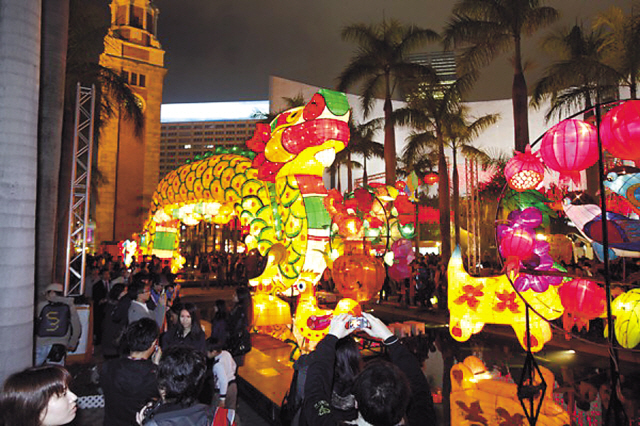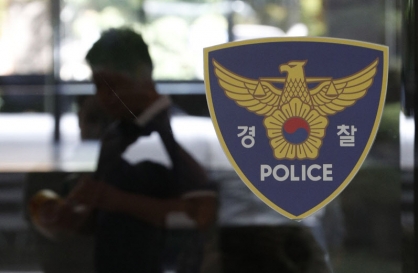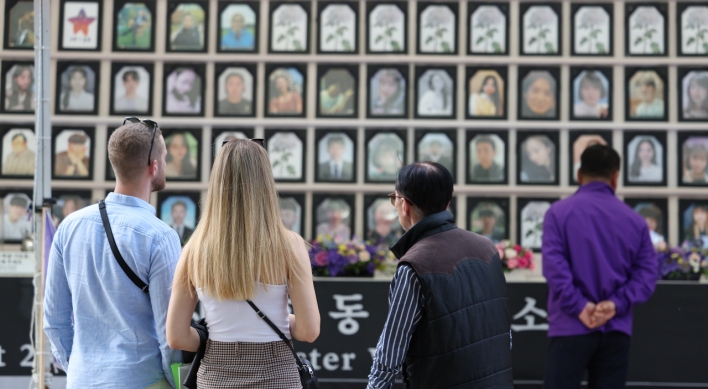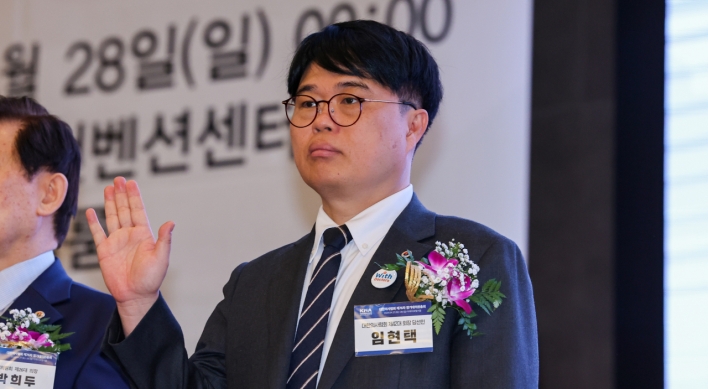Lunar New Year is an important holiday in many of the countries that provide Korea’s more than 1 million expats, such as China and Vietnam.
China’s longest and most important holiday, Lunar New Year sees the whole country flushed in bright red as windows and doors are festooned in red paper decorations and people wear red clothes, decorate poems on red paper, and give their children “hong bao” (luck money) in red envelopes.
Celebrated in China and other places with Chinese populations including Hong Kong, Singapore, Thailand, Indonesia, Malaysia and Taiwan ― not to mention Chinatowns around the world ― the festivities start on the first day of the lunar month and continue until the 15th day, when the moon is full and at its brightest.
China’s longest and most important holiday, Lunar New Year sees the whole country flushed in bright red as windows and doors are festooned in red paper decorations and people wear red clothes, decorate poems on red paper, and give their children “hong bao” (luck money) in red envelopes.
Celebrated in China and other places with Chinese populations including Hong Kong, Singapore, Thailand, Indonesia, Malaysia and Taiwan ― not to mention Chinatowns around the world ― the festivities start on the first day of the lunar month and continue until the 15th day, when the moon is full and at its brightest.

As with all traditional Chinese gatherings, food plays an important role in the Chinese New Year.
Elaborate New Year’s dinners involve tables laden with auspicious foods. For the whole month, Chinese families make delicacies out of oysters, seaweed, abalone and sea cucumber as symbols of good fortune. Fish represents having enough to spare, while garlic stands for eternity and wishing for a long life. Turnips are good omens. “Hao” (oysters) is an exclamation sound, signifying a wonderful event.
Korea’s only official Chinatown, Incheon Chinatown, hosts plenty of Chinese restaurants and souvenir shops in the city center near Incheon Station. Most street vendors and restaurant people are Chinese. With more than 126 years of history, most of the shops found in Chinatown are adorned with Chinese folk displays and paintings.
Celebrate the New Year by wandering around Chinatown, taking in the huge display of red lanterns and indulging in scrumptious Chinese New Year meals.
Vietnam
To the south of mainland China, Vietnam celebrates the family holiday with similar New Year festivities. “Tet,” short for “Tet Nguyen Dan,” which means the first morning of the first day of a new era, marks the beginning of a new year on the lunar calendar, and the beginning of spring.
To wash away the bad luck of the old year, Vietnamese houses are painted and cleaned.
Flowers have a special meaning in Vietnamese culture, signifying feelings of optimism and the joy of living. People spend days decorating the house with kumquat trees, peach blossom branches and other colorful flowers.
Before the annual Tet celebration, many temporary flower markets pop up on sidewalks and in other public areas, and the country smells heavenly of bonsais, kumquats, flowers and apricot trees.
In particular, Vietnamese families bring a Mandarin orange tree into the house for luck and prosperity, hanging greeting cards and good luck symbols on its branches. The more fruit on the tree, the luckier the family.
Food also plays a major role in the Tet celebration. Considered an indispensable dish of the holiday, “Banh Chung” (Earth cake) is placed on the ancestors’ altars to show gratitude to the family’s ancestors and mother Earth. Made of sticky rice, pork meat and green beans, Banh Tet, as well as the long process from making to savoring it, has become a significant part of Tet reunions among families on the first day of the New Year.
For those who want to get a taste of Vietnam’s traditional family celebrations, the Sulnal Han-madang festival at the National Folk Museum of Korea will provide visitors with two parcels of Korean and Vietnamese New Year’s goodies. Children will learn about the “phong bao l x” (red envelope), in which Vietnamese children receive lucky money. There will also be an area where children can play many different instruments from different countries in front of the museum gate.
By Bae Soo-min (soomin623@heraldcorp.com)
-
Articles by Korea Herald










![[New faces of Assembly] Architect behind ‘audacious initiative’ believes in denuclearized North Korea](http://res.heraldm.com/phpwas/restmb_idxmake.php?idx=644&simg=/content/image/2024/05/01/20240501050627_0.jpg&u=20240502093000)
![[Music in drama] Rekindle a love that slipped through your fingers](http://res.heraldm.com/phpwas/restmb_idxmake.php?idx=644&simg=/content/image/2024/05/01/20240501050484_0.jpg&u=20240501151646)







